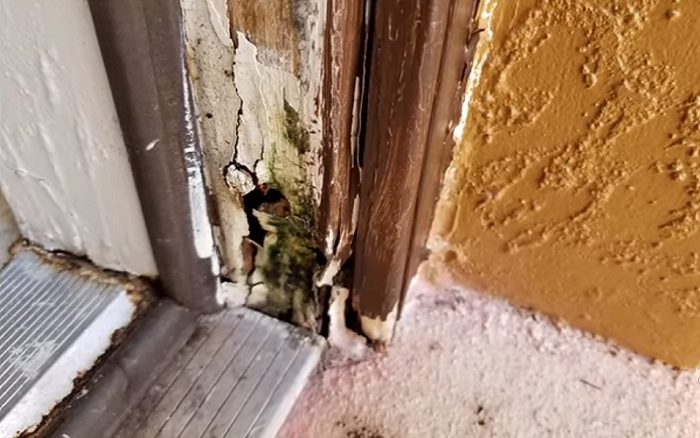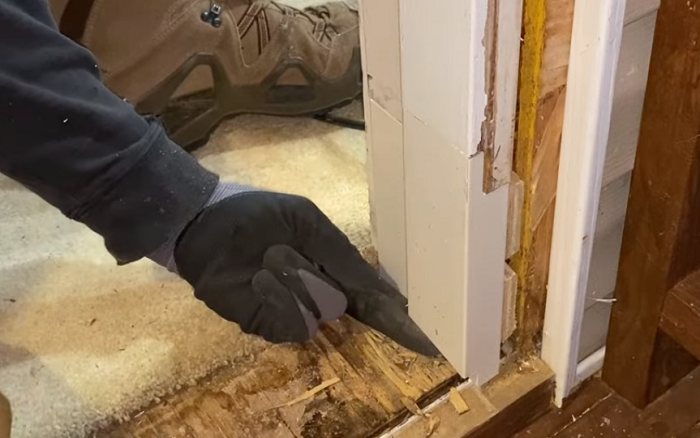What to Do if You Have a Rotted Door Frame?
Discovering a door frame rotting at bottom can be disheartening for any homeowner. Not only does it affect the appearance of your home, but it also undermines the security of your door. However, with the right tools like a door jamb repair kit and a little know-how, you can tackle this issue and restore your door's functionality and charm. In this easy-to-follow guide, we'll walk you through the process of repairing a rotted door frame.
What Causes a Door Jamb to Rot?
A door jamb can rot at the bottom due to moisture exposure and poor maintenance. Common causes include:
· Water Damage: Rainwater seeping through gaps, leaking gutters, or poor drainage can saturate the wood, leading to rot.
· Lack of Sealing: Inadequate sealing leaves the wood vulnerable to moisture, accelerating decay.
· High Humidity: Regions with high humidity levels can increase moisture retention in wood, fostering rot.
· Insect Infestation: Wood-boring insects like termites and carpenter ants can weaken and hollow out the wood, making it more susceptible to moisture infiltration and rot.
· Lack of Maintenance: Neglecting regular inspections and repairs accelerates deterioration.
Steps to be Followed to Repair the Door Jamb
Identifying the Problem
The first step in addressing door frame rotting at bottom is to identify the extent of the damage. Look for signs of decay, such as soft or crumbly wood, discoloration, or a musty smell. If the rot is confined to a small area, you may be able to DIY it. However, if the damage is extensive, you may need to call in a professional expert.
Removing the Rotted Wood
Once you've identified the rotted areas which are mainly at the bottom, the next step is to remove the damaged wood. Use a chisel or a screwdriver to carefully pry off the rotted pieces, being careful not to cause further damage to the surrounding frame. Make sure to wear gloves and safety goggles to protect yourself from splinters and dust.
Treating the Remaining Wood
After you've removed the rotted wood, it's important to treat the remaining wood to prevent further decay. You can use a wood hardener or a wood preservative to strengthen the remaining fibers and protect them from moisture and pests.
Repairing the Door Frame
Once the wood treatment has dried, it's time to repair the door frame. You can use a door jamb repair kit to fill in any gaps left by the rotted wood. The kits provided by Boss Jamb are a great choice as they typically contain a replacement door jamb piece made from solid PVC composite which is great at repelling rot and water. After installing the jamb piece you can consider reinforcing the wood with epoxy or a similar strengthening agent. This additional step will help fortify the weakened wood and prolong the life of your door frame.
Sand the Seam
Once the replacement piece is installed, sand the seam to create a smooth and seamless finish. This will help in blending the new material with the existing door jamb.
Prime and Paint
After completing the repair, apply primer and paint to the treated area to blend seamlessly with the rest of the door frame. This will not only enhance the overall look but also protect the repaired section from future damage.
Preventing Future Rot
To prevent future rot in your door frame, make sure to maintain proper ventilation and drainage around the door. Keep an eye out for any signs of water damage, such as leaks or condensation, and address them promptly. You can also apply a waterproof sealant to the door frame to provide an extra layer of protection.
Conclusion
Dealing with a rotted door frame can be a daunting task, but with the right approach and tools, you can effectively address the issue and restore the functionality and aesthetics of your door. By following the steps outlined in this guide, you can tackle the problem head-on and prevent further damage to your home. Don't wait until it's too late – take action now to protect your door frame and keep your home safe and secure.



